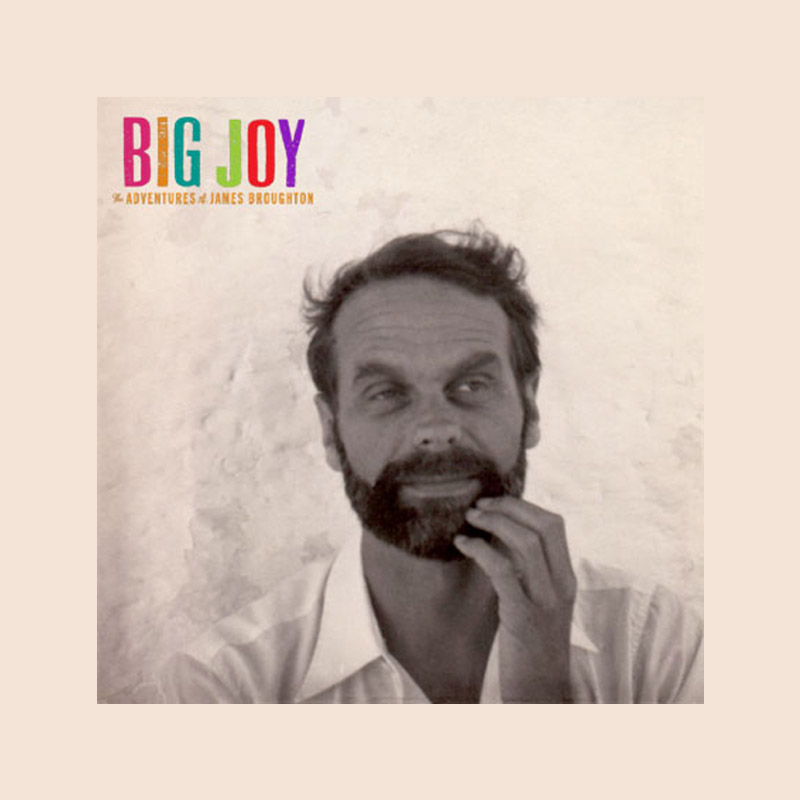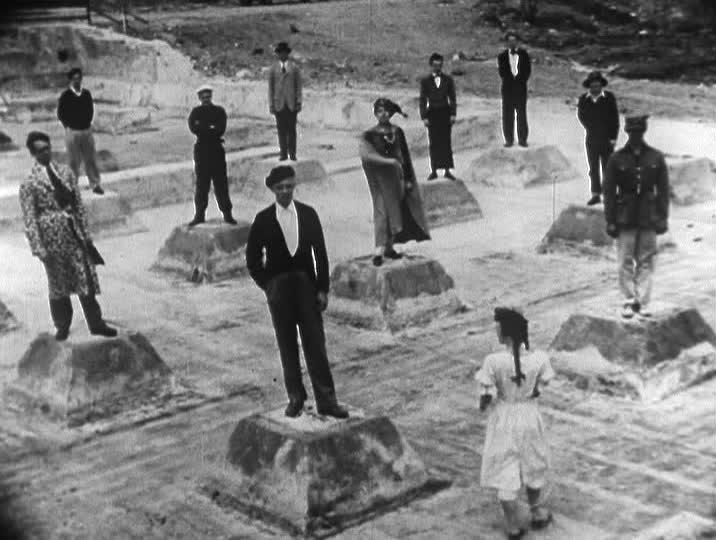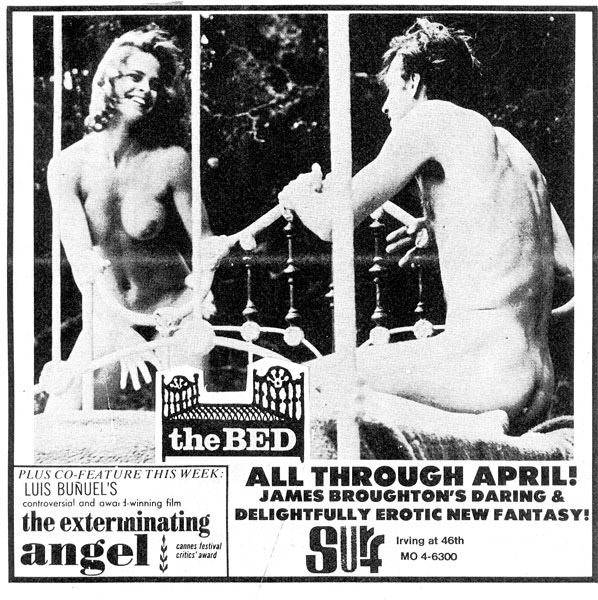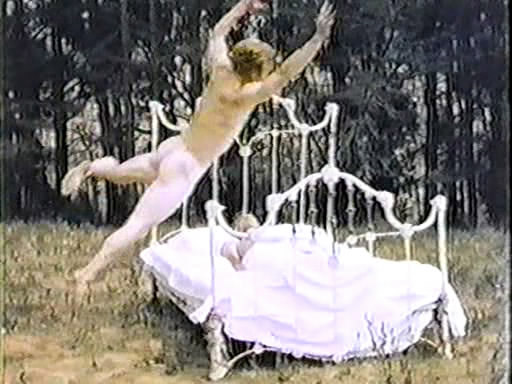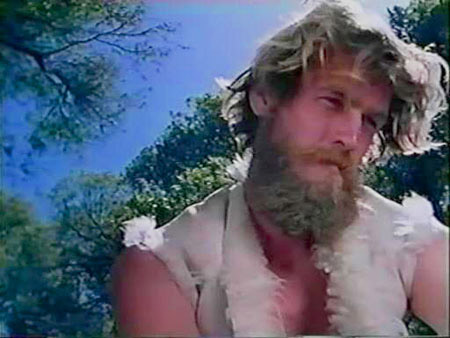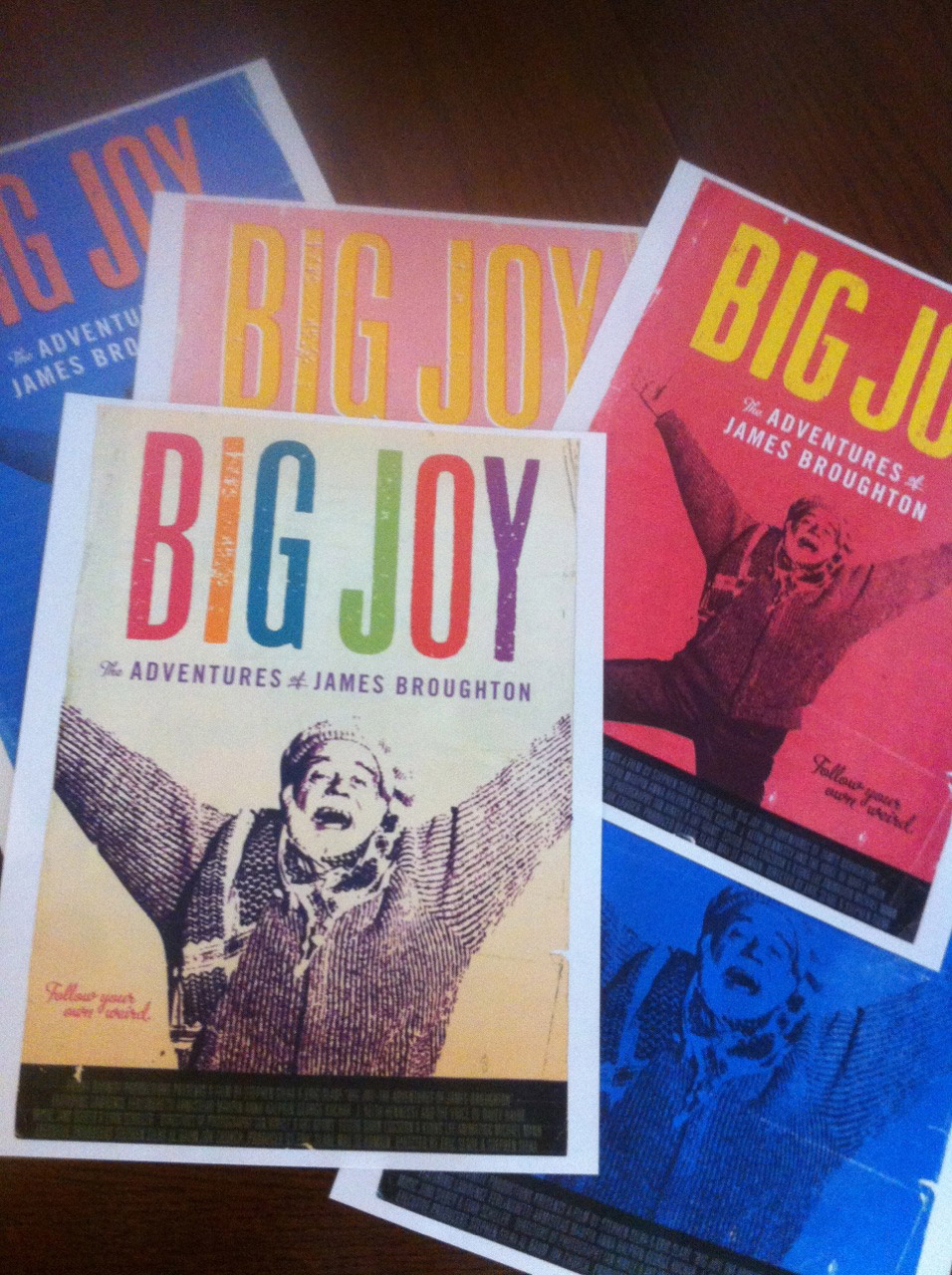By Stephen Silha
James Broughton is the “Laughing Pan” of the 20th Century avant-garde.
I was privileged to know James Broughton for the last 10 years of his life, and now I have spent four years of my life getting to understand his poetry and films, his complexities and brilliance, his hard work and sense of humor. In making my first film, I have learned to appreciate new visual and musical languages, the power of editing, and the joy of dancing with the work of this Laughing Pan. But like Pan, he largely avoided public notice.
Now, audiences have a rare opportunity to encounter him again. People around the world are starting to recognize how the genius of James Broughton can inform our personal and artistic expressions today.
James Broughton was born November 10, 1913 in the central valley town of Modesto, California. His parents were bankers, and his mother wanted him to be a surgeon. But he knew from Day 1 that he was to be a poet. This was reinforced when his angel, Hermy, came to him at age 3 and told him “I was a poet and always would be / and never to fear being alone or being laughed at. / This was my first
meeting with my angel / who is the most interesting poet I have ever met.”
From there, Broughton says: “my childhood passions were dancing and swimming,
circuses, amusement parks, movies, vaudeville, / the Book of Knowledge, and the
land of Oz. / Pet playthings: my toy theater, my magic lantern.”
All these come to life in his film “Testament” (1974), which he thought would be his last film. He even staged a funeral march for himself in that film. But then he met his soulmate, at age 61, and made eight more films.
“Translucence is the greatest of mysteries,” Broughton wrote in his autobiography
Coming Unbuttoned, “and the greatest virtue in a work of art.”
In the new documentary, BIG JOY: The Adventures of James Broughton, film scholar Janis Lipzin says, “James invented and perfected the poetic cinema.”
“Four in the Afternoon” (1951) is the first film Broughton literally shot to his poetry. The images and the words marry effortlessly in four separate poem/vignettes: Game Little
Gladys, The Gardener’s Son, Princess Printemps, and The Aging Balletomane.
Broughton’s love of statuary – both sculpted and posed – shines through in this
film, which takes us through four gradually older characters’ inner thoughts. He
composed these notes when considering the film:
A quartet for poems moving
A film in four movements
Each movement is a variation on the same theme
The movements are at four ages and four stages
- the girl of 10
- the lad of 20
- the woman of 30
- the man of 40
Each movement is in itself a poetic movement
Each movement blends its movement with music and verse
The poems come from his book, Musical Chairs (1950), and the film exemplifies his statement, “I have learned more about the writing of poetry from music than from literature. And more about the making of films from dance than from cinema.” This film attracted a large following in Europe, where they found its fusion of poetic
images, music, dance and words enchanting. His positive reception in Europe,
combined with the specter of anti-communist hearings in the United States, gave
him the incentive to stay in London and work on one of his most high-budget films,
“The Pleasure Garden.”
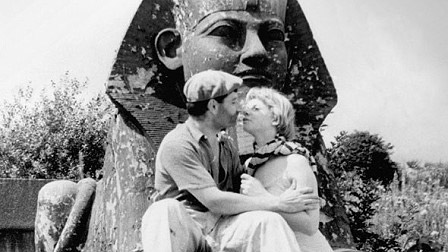
It was “The Pleasure Garden” that won Broughton a special “Prix de Fantaisie
Poetique” at the Cannes Film Festival in 1954, presented by Jean Cocteau. He shot
the film in 35 mm in the ruins of The Crystal Palace Gardens in London. “I meant
it as a love letter to England,” Broughton said. “And to shake them all up into …
dancing a little more in life.” In the film, a number of creative, wishful people in a
park are threatened with arrest by a puritanical Minister of Public Behavior.
It the end, pleasure defeats prudery as a fat fairy godmother (played by Hattie Jacques, who went on to be a popular television actress in England) bestows love unions on daydreaming strangers. Everyone sings:
Love is a pleasure, please
It’s twice the pleasure
to come together
and make a pleasure for two.
Both because Broughton said he was spoiled by having a high-budget crew in
London and because the expense of “The Pleasure Garden” put him in debt,
Broughton did not make films for another 14 years. Rejecting some offers to make
Hollywood-style films, he instead taught film, and wrote and performed poetry.
It wasn’t until Jacques Ledoux of the Royal Belgian Cinematheque sent him a
box of 16mm color film that Broughton began working on what became his only
commercially successful film, “The Bed.”
Imagine this: A rickety wrought-iron bed bumps and rolls down a grassy hillside, finally reaching the bucolic meadow below. It spins, and Adam and Eve appear and playfully chase each other around. The bed is quickly populated with a who’s who of the 1960’s San Francisco counterculture: dancers, poets, musicians, artists. And
most are naked. Made in 1967’s “Summer of Love,” when the Hippie movement was
thriving in California, “The Bed” (1967) playfully reveals how pivotal beds are in the
human comedy. “All the world’s a bed, and men and women merely dreamers,” as
Broughton described his theme with Shakespearean relish.
Many of his friends – the dancer Anna Halprin, the philosopher Alan Watts, the photographer Imogene Cunningham, the astrologer Gavin Arthur – participated in the film’s fanciful tableaux. Others, including the poet Richard Brautigan, filmed scenes that didn’t make it into the final film – demonstrating Broughton’s credo, “When in doubt, CUT!” Music by Warner Jepson showed the possibilities for then- new synthesizers to cast a jauntily mystical glow over the proceedings.
Later, he published a poem, “Song of the Bed,” that begins
O everything important in life
occurs upon a bed.
It’s where you cry when you are born
and where you lie when dead.
The film was so popular it played for a year in San Francisco, and won festival
awards around the world. Later it was used as a training film in the health care
industry to get people more comfortable with nudity.
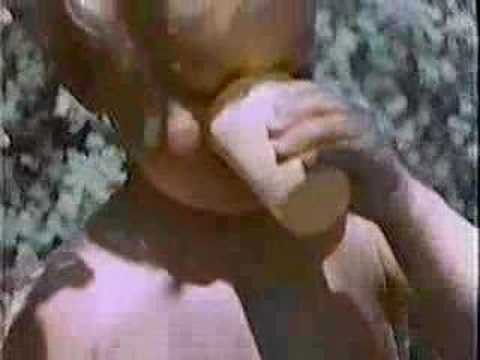
Then Broughton took Eden into his own backyard, filming his 2-year-old son Orion
interacting with nature, with the elements, with Papa God in a treetop and Mother
Earth inside a red ball. It’s in the film “This is It” (1971) that Broughton combines
some of his Zen poems with baby “Adam” encountering the wisdom of the world:
This is It
This is really It
This is all there is
And It’s perfect as it is.
There is nowhere to go but Here
There is nothing Here but now
There is nothing now but This
And This is It.
In “The Golden Positions” (1970), James Broughton contemplates a navel, then imitates the Mass, opening with a Gospel reading, describing the three essential
Confucian positions of standing, sitting and lying. He incorporates a fast-cut
variety of tableaux illustrating various human positions, mostly with naked actors.
With a plain neutral background and sepia coloring, both men and women dance,
exercise, pose; they stand, sit, lie or do all three, as Anna Halprin does in a hilarious improvised dance which ends with her removing her clothes and kneeling down
before them.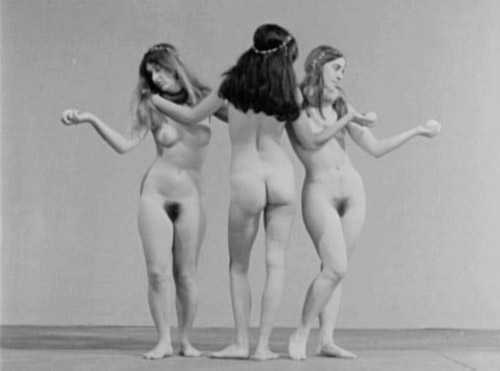 Again, Broughton’s celebration of the body includes some poetry set to music. In the final section of “sublime erotic poses,” a choral kyrie echoes:
Again, Broughton’s celebration of the body includes some poetry set to music. In the final section of “sublime erotic poses,” a choral kyrie echoes:
Body, have beauty upon us
Spirit, have beauty upon us
Your body be with you.
And with your spirit.
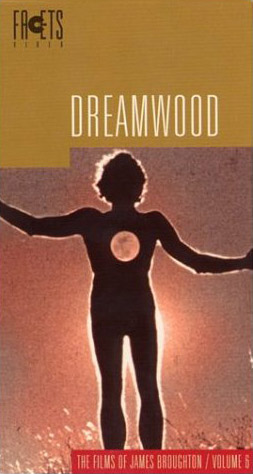
“Dreamwood” (1972) is Broughton’s longest film. He describes it this way: “On an island in the Kingdom of Her there is a labyrinthine grove where the Goddess manifests in many forms to challenge any intruder. No one but an obsessed poet in pursuit of his muse would dare to penetrate this perilous realm of the feminine powers. To the hero who persists in his quest to win her favor and be reborn within her, the Great Mother will reveal her ultimate secret.”
Despite many mythological references, Broughton’s film mirrors his own journey.
As P. Adams Sitney wrote in Visionary Film: The American Avant-Garde, 1943-2000,
“Three sexual initiations [in “Dreamwood”] are performed by a single actress in
slightly different costumes. The axe murder of the hermaphrodite, the sparagmos of
the hero by naked children, the lovemaking, the rebirth, the offerings of saliva, urine,
feces and sperm, and the final incorporation of the sun and the moon are so vividly
and directly depicted in the film that their mythological analogues are superfluous.”
In other words, Dreamwood is Broughton’s ultimate statement about the Divine
Androgyne, the union of masculine and feminine in us all.
In the 1970s, Broughton invented a new form of poetry which he called the High
Kuku, or as Alan Watts commented, “a cuckoo haiku.” James explains: “An homage
to Basho, particularly to his famous haiku of the jumping frog, this film stares
for three minutes into a pond at the Japanese Tea Garden in Golden Gate Park,
observing the subtle changes that take place in a quiet fragment of time. Not being
Japanese I created my own terse verse form, more anthropomorphic than Basho
ever allowed…
I have no desire to move about,
said the Tree,
I’m very attached to my roots.
I have no meaning,
said the film,
I just unreel myself.
His film “High Kukus” (1974) incorporates some of these poems which also
appeared in his book with the same title, a box of different colored strips of paper, interwoven with the poems on them.
In 1975, James met Joel Singer, a student in his class at the San Francisco Art
Institute. While he had assumed he’d made his last film at age 61, he and Joel ignited
a relationship that included collaboration on eight more films between 1976 and
1988. “We were basically cinematic opponents,” Broughton explained. “Where I
relished slow motion effects Joel’s passion was speedy single framing. Perhaps an
attraction of opposites sparked [our work together].”
This can be seen in the very different short film, “The Gardener of Eden” (1981),
which they made together based on footage Joel shot when the pair lived on a
rubber plantation on the island of Sri Lanka. Broughton comments, “Joel’s camera
work is itself an ecstatic dance. The music was performed on twin conch shells.”
And Broughton’s poem of the same name, all of which is in the film, is one of his
best. It ends:
Every day I grow a dream in my garden
where the beds are laid out for love
When will you come to embrace it
and join in the joy of the dance?
Indeed, much of James Broughton’s work in cinema and poetry asks that question:
When will you realize why you’re here, and go for it in the most creative way you
can?
When will you learn to “follow your own weird” and find your own Big Joy?
Stephen Silha produced and co-directed the new documentary BIG JOY: The Adventures of James Broughton. He has written for magazines and newspapers including The Christian Science Monitor, The Minneapolis Star, Creative Living, Yes! Magazine, and The Seattle Times. He lives near Seattle, Washington on Vashon Island, and is part of a think-and-do tank on the future of journalism called Journalism That Matters.

